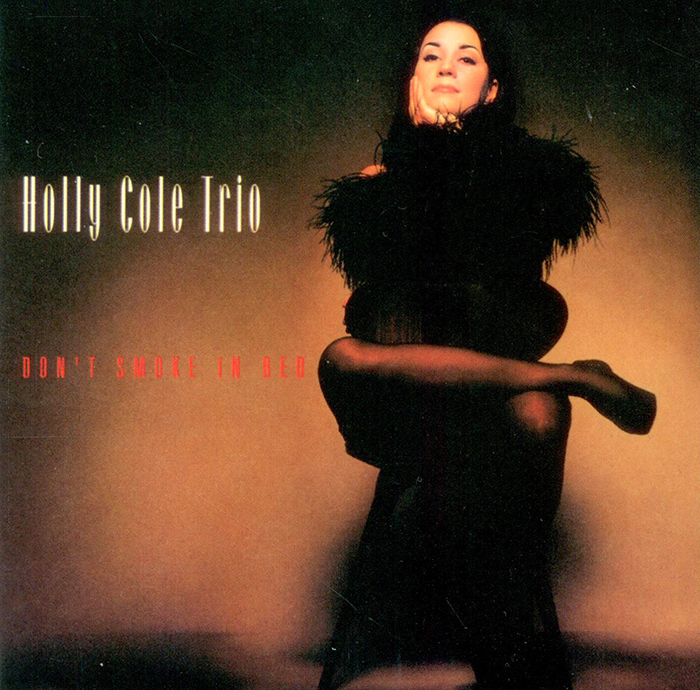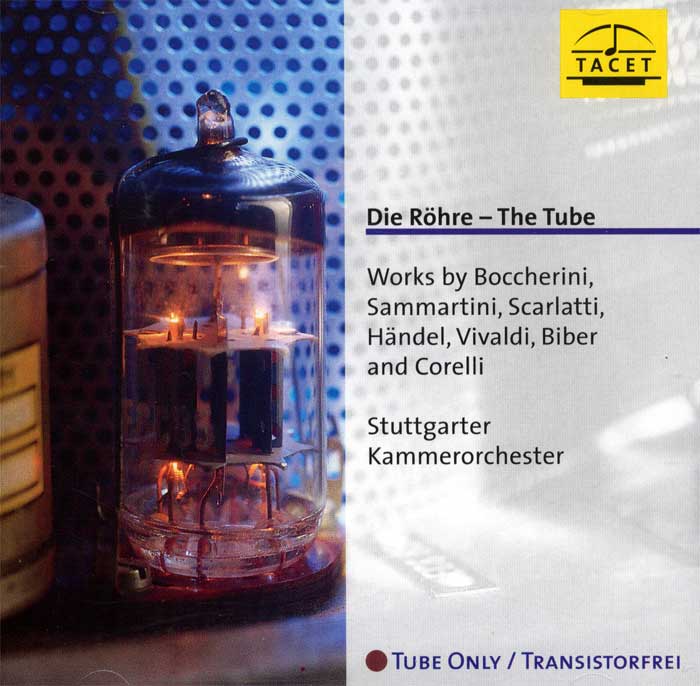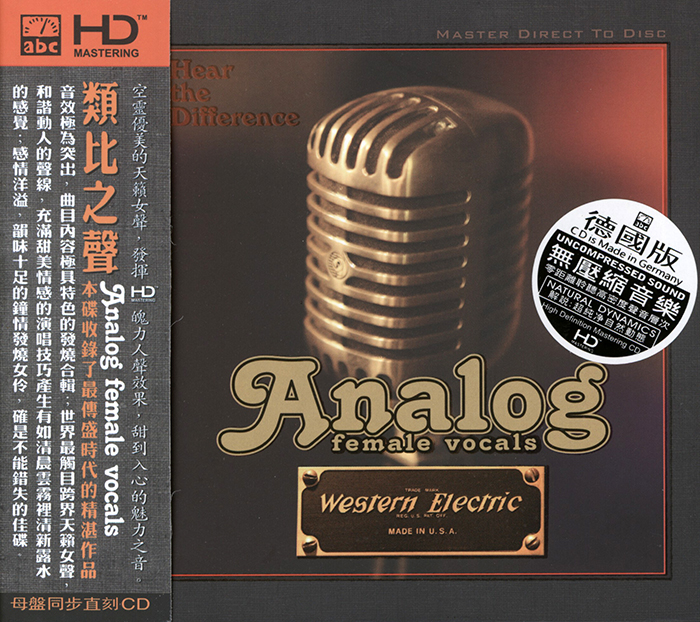Logowanie
Mikołaj - ten to ma gest!
Elton John, The Mamas & The Papas, Cat Stevens, Rod Stewart, Bobbie Gentry, Stevie Wonder, Engelbert Humperdinck
Memory Lane
Edycja Numerowana - 1000 egzemplarzy w skali światowej
RACHMANINOV, Eiji Oue, Minnesota Orchestra
Symphonic Dances / Vocalise
Best Recordings of 2001!!! NAJCZĘŚCIEJ KUPOWANA PŁYTA Z RR!
Karnawał czas zacząć!
Music of Love - Hi-Fi Latin Rhythms
Samba : Music of Celebration
AUDIOPHILE 24BIT RECORDING AND MASTERING
CHOPIN, LISZT, DEBUSSY, DVORAK, Gerhard Oppitz
Dances romantiques - A fantastic Notturno
Wzorcowa jakość audiofilska z Clearaudio
Winylowy niezbędnik
ClearAudio
Double Matrix Professional - Sonic
najbardziej inteligentna i skuteczna pralka do płyt winylowych wszelkiego typu - całkowicie automatyczna
SAMPLER HD-Mastering CD, Seattle Kokon Taiko
TAIKO – The Drums of Japan
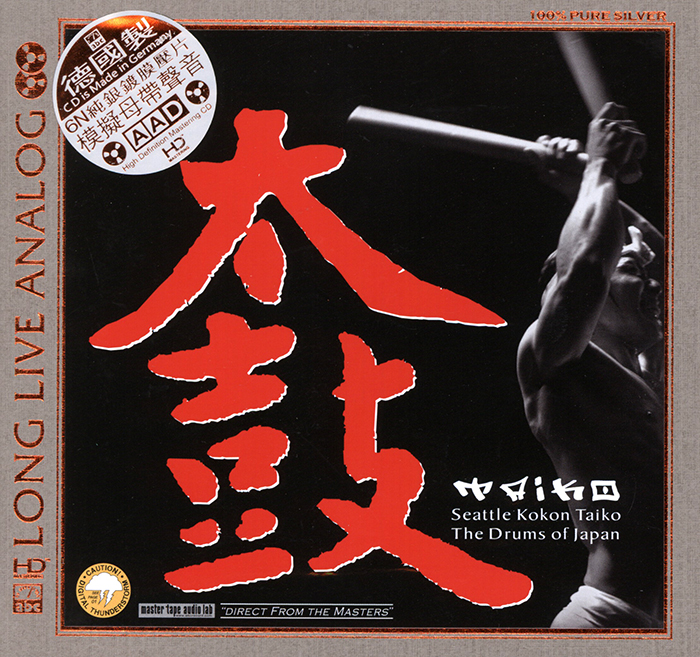
- SAMPLER HD-Mastering CD - sampler
- Seattle Kokon Taiko - orchestra
AAD is a Digital Copy Of
The Master Tape
Nowa, limitowana seria najbardziej audiofilskich nagrań najlepiej 'sprzedających się' wokalistek na świecie.
Każdy z utworów jest bezpośrednią kopią z taśmy matki, a więc zapisu analogowego.
Płyta, na której umieszczono nagrania została wykonana z tworzywa ciekłokrystalicznego. Natomiast warstwa nośna - to najczystsze srebro!
******
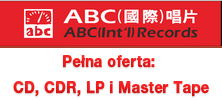 Zapraszamy
Zapraszamy
fachowcy od dźwięku doskonałego. Co kilka miesięcy burzą nasze wyobrażenia o granicy możliwości technicznych w rejestrowaniu bezstratnym muzyki i dźwięków naszej rzeczywistości.
Dziś taką nowością doskonałą, jest technologia opracowana w firmie ABC Int’l Records. Podstawą są nośniki wyprodukowane z wykorzystaniem materiałów ciekłokrystalicznych. To w odniesieniu do krążków CD. Ale podstawą jest, była i będzie – taśma magnetyczna, najlepszy ze znanych nośników zapisu analogowego. Tylko taśma pozwala na niemal doskonałe odwzorowanie zapisanych dźwięków z wiernością porównywalną z walorami tonów źródłowych.
Nie super cyfrowa produkcja, nie doskonale tłoczony winyl – tylko taśma!
W ABC Int’l Records magnetofon STUDER A80 odczytuje zapis z taśmy. Powstaje kopia AAD. Cyfrowa kopia źródła analogowego. Ten trafia do HHB CDR-830 – profesjonalnego duplikatora płyt CD-R - AAD Digital CD. Innymi słowy – otrzymujemy dysk, z którego zazwyczaj robi się matrycę do tłoczenia milionów kopii konsumenckich CD. Tych, które obarczone są wszystkimi błędami kolejnych etapów produkcji tejże płyty. Zamiast źródlanej – woda przegotowana, w najlepszym przypadku!
Płyty AAD Digital CD 1:1 są więc cyfrowymi kopiami taśmy-matki. Wolnymi od jakichkolwiek procesów edycyjnych, poprawczych czy uszlachetniających. Dostajemy do ręki to, co artysta wykonał w studiu lub na koncercie, technik zapisał na taśmie, a obaj, po odsłuchu materiału w wozie transmisyjnym czy studiu nagraniowym orzekli: tak, to nasza muzyka, nasza realizacja, dokładnie tak graliśmy, jak nasz kolega utrwalił na taśmie.
Wreszcie CD High Damping Coating. Technologia w ogólnym ujęciu znana od ćwierćwiecza, nieustanie doskonalona, wykorzystująca materiały o idealnej przejrzystości, a więc ciekłokrystaliczne. W płytach oferowanych przez ABC – zastosowano dodatkowo powłokę tłumiącą wszelkie fizyczne i elektroniczne, niepotrzebne artefakty. Po prostu – otrzymujemy – kopię taśmy-matki na płycie CD o rewelacyjnych walorach dźwiękowych w porównaniu z krążkami bazującymi na tworzywie poliwęglanowym.
******
The culture of taiko in Japan has been developed into pretty mature period now. The Japanese taiko culture, actually origins from China's drum culture. Chinese people invented drum in Xia Dynasty, and drum was introduced to Japan through China during Sui and Tang dynasties (581-907 AD). But since Chinese mainland experienced the Cultural Revolution decades ago, the performance of drum had been devastated and destroyed. Japan, otherwise. Japan educates their citizens to protect their national culture all the time, so they do a really good job in preserving and developing taiko culture. Though the Japanese taiko origins from China, they are building up their own brand now. The most significant feature of Japanese taiko, I believe, embodies the spirit of Bushido. They do not look like playing drum but showing the spirit of samurai, as they wave the drum sticks like wielding samurai swords. Different from the Chinese drum performances, which play gently and give more emphasis on expression, eyes contact and upper body, Japanese taiko is played with the whole body, with great strength.
Japanpese taiko started to add some elements of Western music in 1960s, which made taiko performances become quite modern and magnificent. We used to enjoy the performance of taiko in a way of metaphor, elegance and tranquility in the early time. As the change of times, in order to meet the favor of the public, Japanese taiko starts to join some elements of Western music, and the style begins to change, no matter on the way of drumming or on the composition. We cannot say it is not good with those changes, for the value of popularity. But whether the popular thing can become classical requires the test of time. We cannot block the trend of popular music, but we should hold the value of classic music behind the popularity.
The style of Chinese drum, only two or three types can be told, they are all the heritages from history. No matter on the manufacture or on the performance of drum, we all need to open our own style. But there needs time to achieve the depth and breadth of Chinese drum culture.
Today we record this taiko album on the west coast of the United States, not only for manufacturing this album, but also for Chinese drum can borrow the Japanese taiko culture, and hope that we can invite them to perform taiko in China. Also, the Chinese drum culture needs to go towards the whole world. We really want to do such thing that our Chinese drum culture also have our own international brand, doing well on the depth and breadth, then Chinese drum culture will go to world naturally, make people feel the value of Chinese drum. First, we need to have our Chinese drum culture among overseas Chinese communities, such places as California, San Francisco. We want to develop drum culture towards oversea steps by steps, this is how Chinese drum culture will develop. Hope people will like this taiko album.
We all should try our best to develop Chinese drum music culture, keep inheriting, promoting it. One day, we hope we can introduce the modern Chinese drum performance to the European countries, and publicize it to other counties, let everybody enjoy the special style of Chinese drum.






























